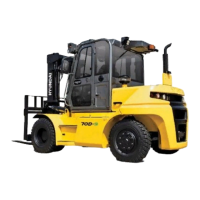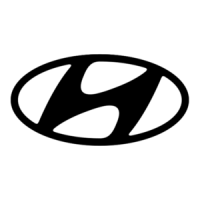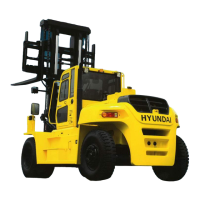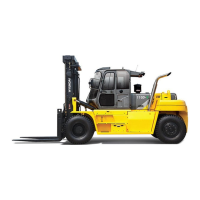CONTENTS
FOREWORD
A message to hyundai lift truck operators
-----------------------------------------------------------------------
0-1
Introduction
------------------------------------------------------------------------------------------------------------------------
0-2
How to use this manual
-----------------------------------------------------------------------------------------------------
0-3
EC regulation approved
----------------------------------------------------------------------------------------------------
0-5
Safety labels
-----------------------------------------------------------------------------------------------------------------------
0-6
Guide (Direction, Serial number, Symbols)
---------------------------------------------------------------------
0-13
1. SAFETY HINTS
1. Daily inspection
--------------------------------------------------------------------------------------------------------------
1-1
2. Do's and don'ts
--------------------------------------------------------------------------------------------------------------
1-2
3. Seat belts
-----------------------------------------------------------------------------------------------------------------------
1-4
4. No riders
-------------------------------------------------------------------------------------------------------------------------
1-5
5. Pedestrians
--------------------------------------------------------------------------------------------------------------------
1-6
6. Operator protection
-------------------------------------------------------------------------------------------------------
1-7
7. Fork safety
------------------------------------------------------------------------------------------------------------------
1-8
8. Pinch points
----------------------------------------------------------------------------------------------------------------
1-9
9. Travel
------------------------------------------------------------------------------------------------------------------------------
1-10
10. Grades, ramps, slopes and inclines
----------------------------------------------------------------------------
1-11
11. Tip over
--------------------------------------------------------------------------------------------------------------------------
1-12
12. Surface and capacity
----------------------------------------------------------------------------------------------------
1-14
13. Parking
---------------------------------------------------------------------------------------------------------------------------
1-15
14. Refueling
------------------------------------------------------------------------------------------------------------------------
1-16
15. Step
--------------------------------------------------------------------------------------------------------------------------------
1-17
16. Operator's safety rules
--------------------------------------------------------------------------------------------------
1-18
17. Side shift
------------------------------------------------------------------------------------------------------------------------
1-19
2. OPERATING HAZARDS
1. Loose loads
--------------------------------------------------------------------------------------------------------------------
2-1
2. Long and wide loads
-----------------------------------------------------------------------------------------------------
2-2
3. Rear swing
---------------------------------------------------------------------------------------------------------------------
2-2
4. Low overhead clearance
-----------------------------------------------------------------------------------------------
2-3
5. Fast turns and high loads
----------------------------------------------------------------------------------------------
2-3
6. Right angle stacking
------------------------------------------------------------------------------------------------------
2-4
7. Chain slack
---------------------------------------------------------------------------------------------------------------------
2-4
8. Pallets and skids
------------------------------------------------------------------------------------------------------------
2-5
9. Caution for electrical lines
---------------------------------------------------------------------------------------------
2-5




